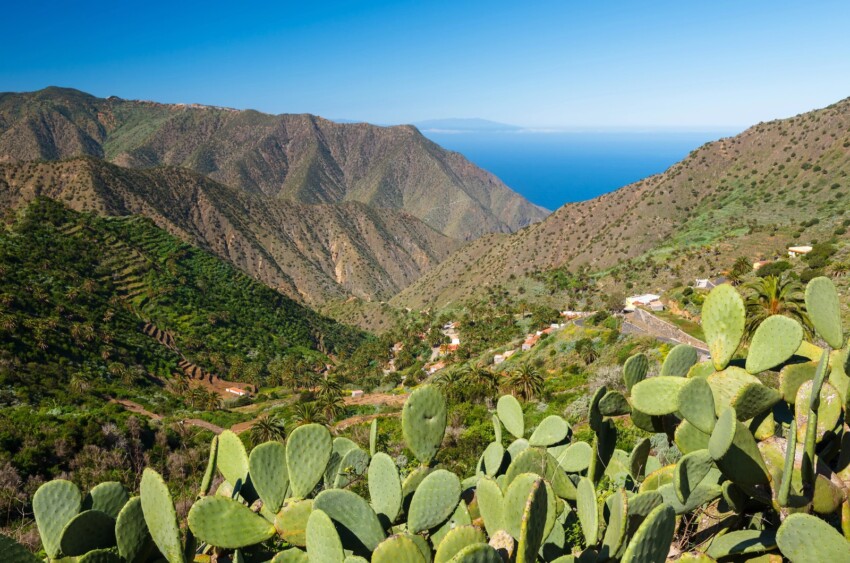

The small, circular island of La Gomera, also known as Columbine Island for its historical connection to the Discovery of America, is the least touristy and most tranquil of the Canary Islands.
Unspoilt and wild, La Gomera boasts traditional villages, breathtaking views and tranquil beaches. Its capital, San Sebastian de la Gomera, was founded in the 15th century and developed by terracing a steep hillside around a natural bay.
Small La Gomera, larger only than El Hierro, encompasses 16 protected natural areas, among which the National Park de Garajonay, declared a UNESCO World Heritage Site in 1986, stands out with its exceptional beauty. It is also home to the island’s highest peak, which reaches 1,487 metres above sea level.
Among the resorts, the most famous is Playa Santiago, along the southern coast of the island, although it has nothing to do with the tourist exploitation found on the neighbouring islands of Tenerife or Gran Canaria, but rather has small hotels, souvenir shops and family-run restaurants.
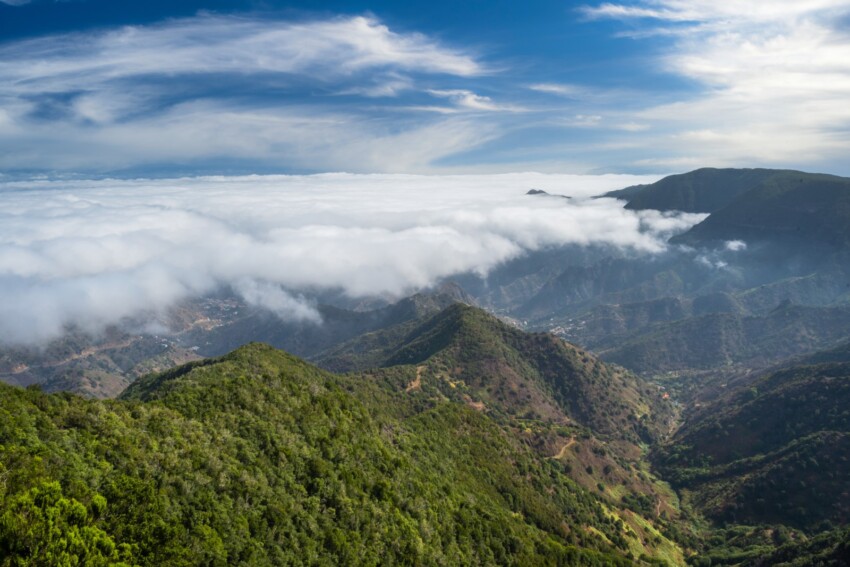
The Garajonay National Park is located in the centre of the island of La Gomera and is famous for enclosing the largest laurel forest in the Canaries, covering about 70 per cent of the protected area, a habitat that has almost disappeared from southern Europe and North Africa.
The park, which consists mainly of a plateau but owes its name to the highest point on the island, Garajonay at 1,484 metres above sea level, is rich in springs, streams and lush vegetation thanks to the water vapour that condenses. Of the 450 species that inhabit the Parque de Garajonay, 80 are endemic to the archipelago and 34 to the island of La Gomera.
The park, declared a UNESCO World Heritage Site in 1986, covers 40 square kilometres and also includes the villages of San Sebastian, Hermigua, Agulo, Vallehermoso, Valle Gran Rey and the mountains of Alajero.
The park has an extensive network of facilities and services including a Visitors’ Centre, an information centre, an extensive network of lookout points, recreational areas and a network of well-marked trails.
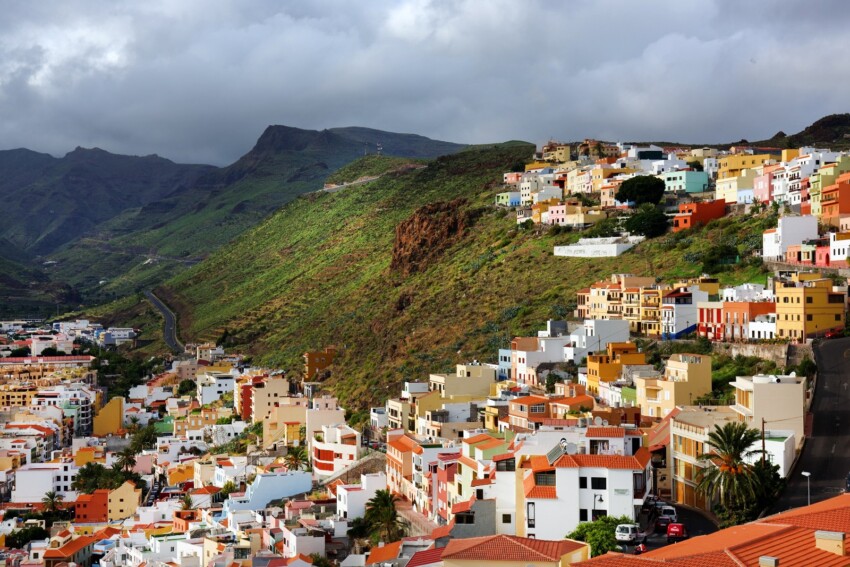
San Sebastian is the capital of La Gomera, an island famous for its close connection with the discovery of America, and was founded in the 15th century at the mouth of the Villa Gorge. The town has nothing to do with the hectic pace of large metropolises, but is like a gateway to the island, attracting visitors with its cultural attractions and its port for ferries and yachts. It is worth lingering at the harbour and soaking up the atmosphere among modern yachts and traditional colourful boats.
Grown amphitheatrically from terraces on the side of a hill overlooking the natural bay, the town lies along the east coast of the island and is reflected in the south-western shores of Tenerife.
San Sebastian’s monuments of interest include the Church of La Asunción in the Plaza Mayor square, and the Torre del Conte (Count’s Tower), the medieval fortress Casa de los Peraza, the oldest building in the archipelago, the Columbus House Museum and the hermitage of San Sebastian, built around 1530. A local market is held twice a week, where locals sell their homemade jams, fresh fruit and vegetables and other typical products. This central square is also home to one of the oldest buildings in the town, important from a historical and cultural point of view: the former customs house, built in the 17th century. Goods for export were stored here. The place became famous because Columbus, before setting off to discover the Americas, filled his water reserves there in 1492.
From the former customs house, the main street of San Sebastian, Calle del Medio, with its old buildings, administrative offices, the Torre del Conde and the parish church Nuesta Senora de la Asuncion are easily accessible.
San Sebastián de La Gomera has excellent tourist facilities, the best on the island, and water sports centres and is an excellent starting point for visiting La Gomera.
Several daily ferries shuttle between the port and the neighbouring island of Tenerife and numerous catamarans offer excursions around the island.
Not far away are the tourist resorts of Santiago in the south and Los Organos in the north, the Garajonay National Park and the popular Majona Natural Park. A short distance from the centre of the capital are the 2 beautiful beaches of Playa de San Sebastian and Playa de la Cueva.
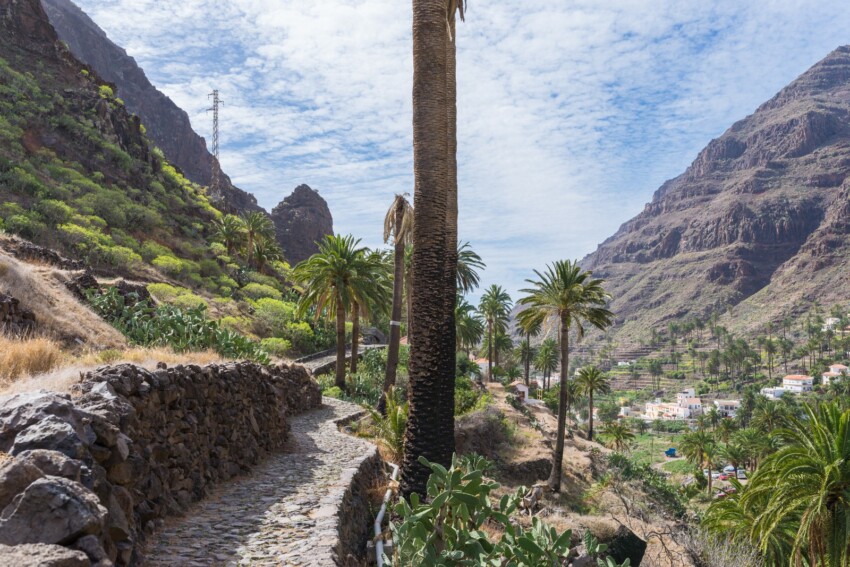
Valle Gran Rey, the main tourist area of La Gomera, is famous for the beauty of its landscape.
This deep , lush gorge that descends to the sea is home to the Eremo de Santo, a small chapel carved into the rock and surrounded by a mirador from which one can appreciate the beauty of the southern coastline. Don’t miss the Mirador Cesar Manrique from where you can discover enchanting views of the valley and surrounding mountains.
The coast at the end of Valle Gran Rey contains the best beaches in La Gomera such as La Playa, La Puntilla, Playa del Ingles, Charco del Conde and Playa de las Vueltas.
In the valley are the small villages of Guada, El Guro, La Biscayne and Chipude . Valle Gran Rey has a network of trails perfectly suited for all types of users.
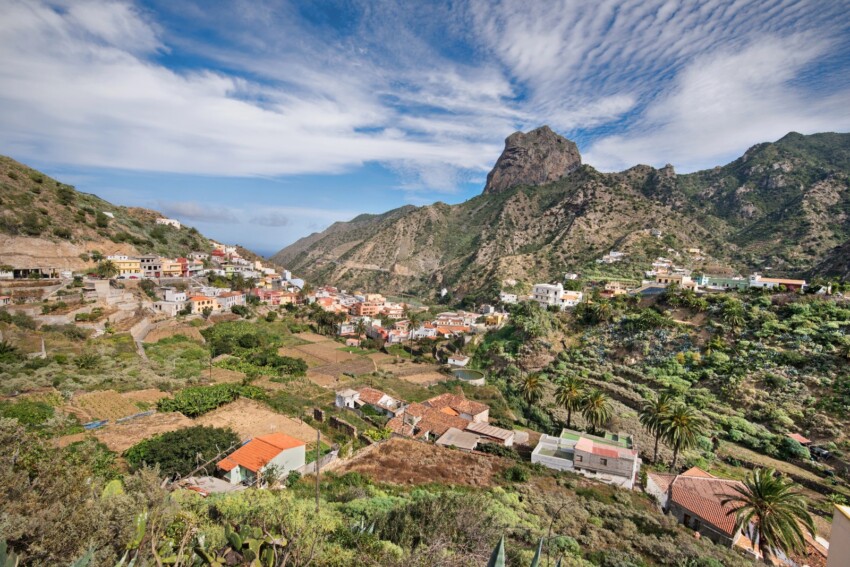
Vallehermoso, literally the beautiful valley, is located in the northern part of La Gomera and is the largest municipality on the island, which also includes the villages of Chipude, El Cercado, Tamargada, Alojera, La Dama, Macayo, El Ingenio and Epina. The town is an immense open-air garden, known for its lush orchards. Not only tropical fruits grow here, but also apricots, apples, pears and plums. Local products can be bought at the market near the town square.
The village of Vallehermoso lies 230 metres above sea level and is surrounded by bare mountains. The centre of the village, whose heart is Plaza de la Constitution, enclosed by the town hall, banks, businesses and bars, boasts numerous examples of traditional architecture and the neo-Gothic Church of San Juan Bautista, whose tower rises above the town centre, drawing attention to its cubic construction.
The Descubrimento Botanical Garden is very beautiful, covering an area of 16 square metres and housing plant species from all over the world.
Don’t miss the Garajonay National Park, the many surprising beaches in the north-western part of the island and Los Organos, a wonderful volcanic formation that can be admired from the sea. The Roque Cano can be observed from the La Encantadora dam.
Lovers of handicrafts will appreciate the ceramics of El Cercando produced according to ancient traditions.
If you head towards the sea, after about 3 kilometres you will reach Playa de Vallehermoso, whose pebble beach is surrounded by cliffs and is suitable for experienced swimmers. For everyone else, a complex has been built for safer swimming, strictly with a sea view.
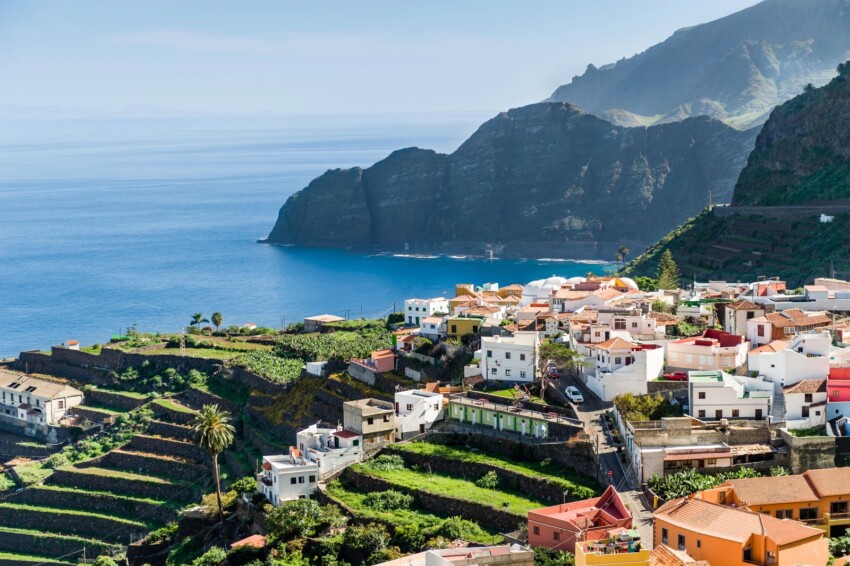
The village of Agulo is located along the north-east coast of the island of La Gomera, between the Hermigua and Vallehermoso valleys, close to the Garajonay National Park.
Old colonial houses overlook small, winding cobbled streets, creating a unique historic centre from which one can admire the Teide, the volcano on the neighbouring island of Tenerife.
The Lepe district is picturesque, but the areas of La Palmira and Las Rosas, surrounded by greenery, are equally pleasant.
The views from Mirador de Abrante and Mirador de Roque Blanco are spectacular.
Agulo is easily accessible from the capital San Sebastian de La Gomera and La Gomera Airport.
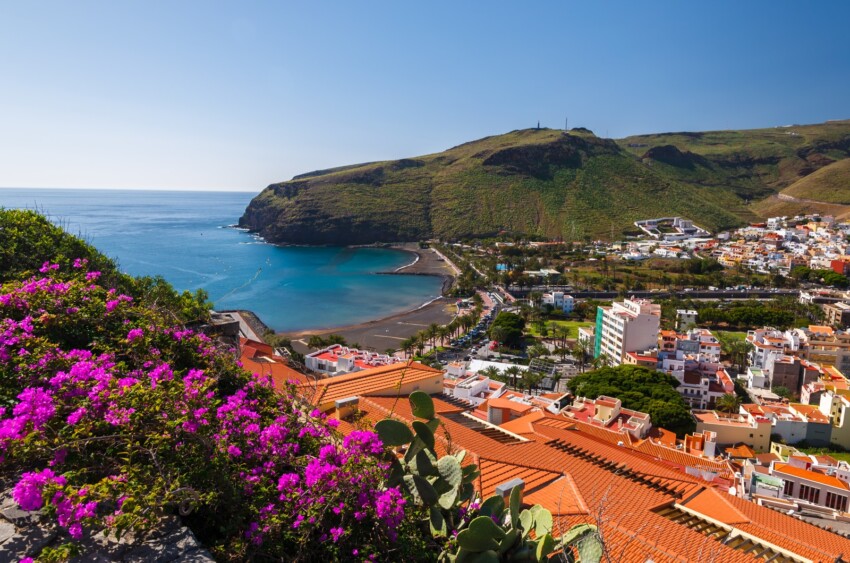
The fishing village Playa Santiago is located in the sunny south of La Gomera. In this area, independent tourists can enjoy the quiet atmosphere of the town. The centre of this settlement is the lively Plaza del Carmen, a favourite meeting place for locals. From here begins a small promenade that extends beyond the harbour, where bars and restaurants offer beautiful sea views while sampling the specialities of Canarian cuisine.
To the east, the houses of the idyllic La Laguna area are located in the hills, surrounded by banana plantations. Here you will find quiet flats and the old Tecina settlement, which stretches above the town along the mountain ridge. A luxury hotel is located on its slope.
Playa Santiago and Playa del Medio are the beaches that complete the landscape and the tourist offer of this area of La Gomera. A small airport has been built near Playa Santiago, but the place has remained quiet as air traffic is very limited.
The charming village of Hermigua is located along the side of a ravine 210 metres above sea level in the northern part of La Gomera between high mountain ranges.
With a rich cultural heritage, Hermigua counts among its treasures of typical Canarian architecture the Convent of Santo Domingo de Guzmán, dating back to 1598. Also of interest are the Ethnographic Museum and the Church of the Incarnation.
At the foot of Hermigua is the beautiful beach of Santa Catalina and within easy reach is the Playa de la Caleta.
The village is an ideal destination for hikers as it includes in its territory the beautiful and lush forest of El Cedro, located on the edge of the Garajonay National Park, beautiful gorges, and the twin rocks of Roques de San Pedro. Not to be missed is the village of Agulo.
Hermigua is located 16 kilometres from San Sebastian, the island’s capital.
North of Vallehermoso, in the north-western part of the island of La Gomera, is the wonderful natural protected area of Los Organos, an astonishing basalt formation that reaches a height of 800 metres at Punta de las Salinas.
This impressive cliff, an exceptional testimony to La Gomera’s volcanic origin, has a shape reminiscent of the long pipes of an imaginary giant organ, the result of the cooling and subsequent erosion of lava by the sea and wind.
The natural work of art of Los Organos is among the most impressive basalt pipe systems in the world and can only be appreciated from the sea on tours that depart from the small ports of Playa Santiago and Valle Gran Rey.
During your excursion you will also have a good chance of seeing whales and dolphins.
In the following map you can see the location of the main places of interest mentioned in this article.